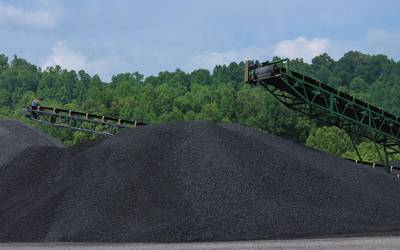US Coal Set for an Upturn in 2017/18
The medium-term outlook remains challenging but some of the short-term problems that tipped the industry into crisis over the last two years are abating.
Coal production slumped from 1 billion tons in 2014 to just 739 million tons in 2016, according to the U.S. Mine Safety and Health Administration.
The average number of operators and contractors employed at the coal mines (excluding office staff) fell from 111,000 in 2014 to just 78,000 in 2016.
But production increased by almost 35 million tons in the third quarter of 2016, around 22 percent, according to the latest data from the U.S. Energy Information Administration.
And production is likely to have increased further in the fourth quarter, when the figures are published next month.
The increase in output should start to boost employment, with at least some of the 33,000 employees and contractors laid off between 2014 and 2016 likely to be rehired.
Coal producers were hit by a perfect storm of warm weather and a huge oversupply of natural gas during 2015/16.
The three months between December 2015 and February 2016 were the warmest winter on record, according to the National Oceanic and Atmospheric Administration.
Electricity generation fell by 4 percent compared with the same period a year earlier as warm temperatures cut heating demand.
But natural gas production was more than 2 percent higher than the previous winter as a result of the shale revolution.
Gas stocks at the end of February 2016 hit a seasonal record and were more than 50 percent higher than at the same point a year earlier.
By March 2016, the average cost of gas delivered to power producers plunged to a low of just $2.23 per million British thermal units, down from $3.55 a year earlier.
Gas was cheaper than coal for all but one month between November 2015 and June 2016, adjusting prices for the different efficiency of gas and coal-fired power plants.
The result was an enormous switch in power generation away from coal and toward natural gas during 2015 and 2016.
The average coal-fired power plant was running around 61 percent of the time in 2014 but that declined to 55 percent in 2015 and 53 percent in 2016.
By contrast, the average gas-fired power plant was generating just 48 percent of the time in 2014 but that increased to 56 percent in both 2015 and 2016.
Lower generation rates left electricity producers with a big and unwanted increase in coal in their stock yards in 2015/16.
Coal stocks held by power producers rose from a low of 118 million tons in March 2014 to a peak of 196 million tons in December 2015.
By November and December 2016, power producers' coal stocks were more than 40 million tons or around 30 percent higher than a year earlier.
As power producers attempted to limit the stock build and cut new orders, the mining sector was pushed into a crisis, with mines closing and laying off thousands of operators and contractors.
After a terrible 2015 and start to 2016, coal producers have good reasons to expect the worst of the industry's recession is over.
Natural gas production has been falling year-on-year since May 2016 and gas prices have been on an upward trend since March 2016.
Gas has become steadily more expensive than coal. The delivered cost of gas moved above coal in July 2016 and by January 2017 gas was almost twice as expensive.
Power producers have responded by switching back from gas toward coal. Gas-fired power plants operated around 51 percent of the time in January 2017 down from 57 percent in January 2016.
Coal-fired power plants operated around 59 percent of the time in January 2017 up from 56 percent in January 2016.
Power producers' gas consumption has been declining year-on-year since October 2016 while coal consumption has been rising.
Critically, the overhang of coal stocks at power plants is clearing, with inventories back down to 157 million tons by the end of January and 30 million tons below a year earlier.
U.S. coal exports also jumped in the fourth quarter to 19.3 million tons up from 12.6 million tons in the third quarter, the highest level since April-June 2015.
The short-term outlook for the coal sector remains positive with gas prices for the summer of 2017 rising strongly.
Gas stocks have ended the winter looking much tighter than at this point in 2016 and the futures market has moved into a big backwardation between 2017 and 2018.
Futures prices for gas delivered at Henry Hub in June 2017 have risen almost 19 percent from $2.86 on Feb. 22 to $3.40 on April 6.
Gas for delivery in June 2017 is trading at premium of 53 cents per million British thermal units compared with June 2018, up from a premium of just 9 cents on Feb. 22.
Higher gas prices will encourage power producers to limit gas consumption as much as possible this summer and run coal-fired power plants for more hours which should support a significant increase in coal demand.
The coal industry's problems have not gone away but this year should feel much more positive than the last two years for coal companies and workers.






